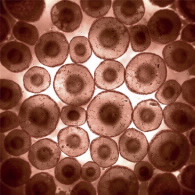FOR IMMEDIATE RELEASE
ACS News Service Weekly PressPac: July 14, 2010
Supercharged proteins enter forbidden zone of biology
Scientists are reporting discovery of a way to help proteins such as the new generation of protein-based drugs -- sometimes heralded as tomorrow’s potential “miracle cures”-- get past the biochemical “Entrance Forbidden” barrier that keeps them from entering cells and doing their work. The new technique, described in the monthly journal, ACS Chemical Biology: “Potent Delivery of Functional Proteins into Mammalian Cells in Vitro and in Vivo Using a Supercharged Protein,” represents a new use for an engineered form of green fluorescent protein, the topic of the 2008 Nobel Prize in Chemistry that is one of the most important research tools in biosciences.
In the report, David Liu and his colleagues describe the difficulty of delivering proteins from the outside of mammalian cells into their interiors. For that reason, nearly all of the blockbuster drugs that are proteins must do their work on the exterior of cells, activating receptors that send signals to the interior. This constraint greatly limits the scope of protein-based drugs. Liu’s solution: Attaching proteins to molecules of "supercharged" green fluorescent protein, which they mutated to give it a very high positive charge. When the hybrid proteins bump into the surface of a cell, they get pulled inside by negatively charged molecules called proteoglycans.
Liu and his team tested the hybrid proteins on five types of cells, and found that they were extremely good at carrying their protein cargo inside. In fact, the supercharged protein was up to 100 times better at getting proteins into cells compared to other approaches. The delivered proteins were able to go to their target locations in the cell such as the nucleus or cytoplasm and perform their jobs. “To our knowledge, this is the first report of functional delivery of an enzyme into retinal cells in vivo,” the researchers state.
![]()
Contact
Science Inquiries: Michael Woods, Editor, 202-872-6293
General Inquiries: Michael Bernstein, 202-872-6042

generation of protein-based medications
— sometimes heralded as potential
“miracle cures” — closer to wide use
in cells, like the structures shown here
viewed under a microscope.
Credit: iStock
(High-resolution version)

